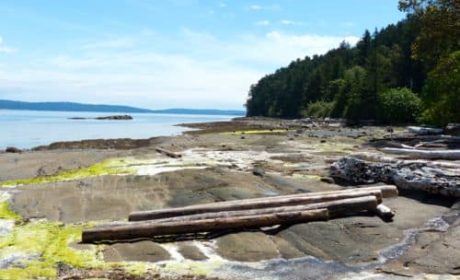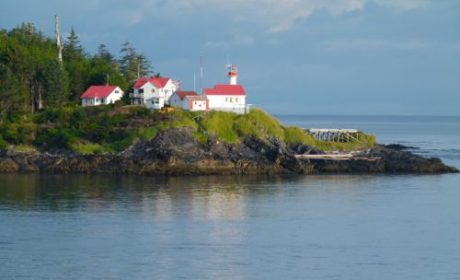Are you looking for an off-the-beaten-path trip in Canada? Central Newfoundland is the place to be!
Known for natural beauty, rich history, and a location along iceberg alley, The Rock, or Newfoundland, offers plenty of options for active boomer travelers.
Debi Lander of ByLanderSea, reports on her trip to the central region of Newfoundland. She shares her experience and tips for how you can explore the nature, learn about the cutural heritage, and meet the friendly inhabitants of this region in Eastern Canada.
Locations sporting wild green landscapes, small fishing villages, centuries of history, and friendly people often attract Baby Boomers. Ireland flaunts those attributes, but tourists have overrun the Isle.
I discovered a far less touristy island: Newfoundland. This off-the-beaten-path Canadian province rests at the edge of the Atlantic and offers similar green-forested landscapes, tiny picturesque towns, and warm and friendly people as Ireland. Americans still need a passport, but the costs will be far less than a European trip.
Most flights to Newfoundland (compare prices here) land in St. Johns, the colorful capital city with a fascinating history and distinct Irish and British heritage. Be clear about the arrival time on your ticket, as Newfoundland has its own time zone, a half-hour ahead of Atlantic time and 90 minutes ahead of the Eastern time zone. Seriously quirky but true.
St. Johns rests in southern Newfoundland and is, by far, the largest city and home to 40% of the Canadian province’s population. Once an independent country, Newfoundland united with Labrador to become Canada’s easternmost province in 1949.
The joint land mass runs nearly the size of California but with a population of just 538,000. The island of Newfoundland, fondly known as ‘The Rock,’ measures 42,031 square miles, making it the world’s 16th-largest island.
Must-see sights in St. Johns include the downtown, known for its colorful row houses. Above the city lies Signal Hill, the site of the first transatlantic wireless communication. And, depending on the time of year, iceberg viewing.
Gander: a Central Newfoundland town with a beautiful story
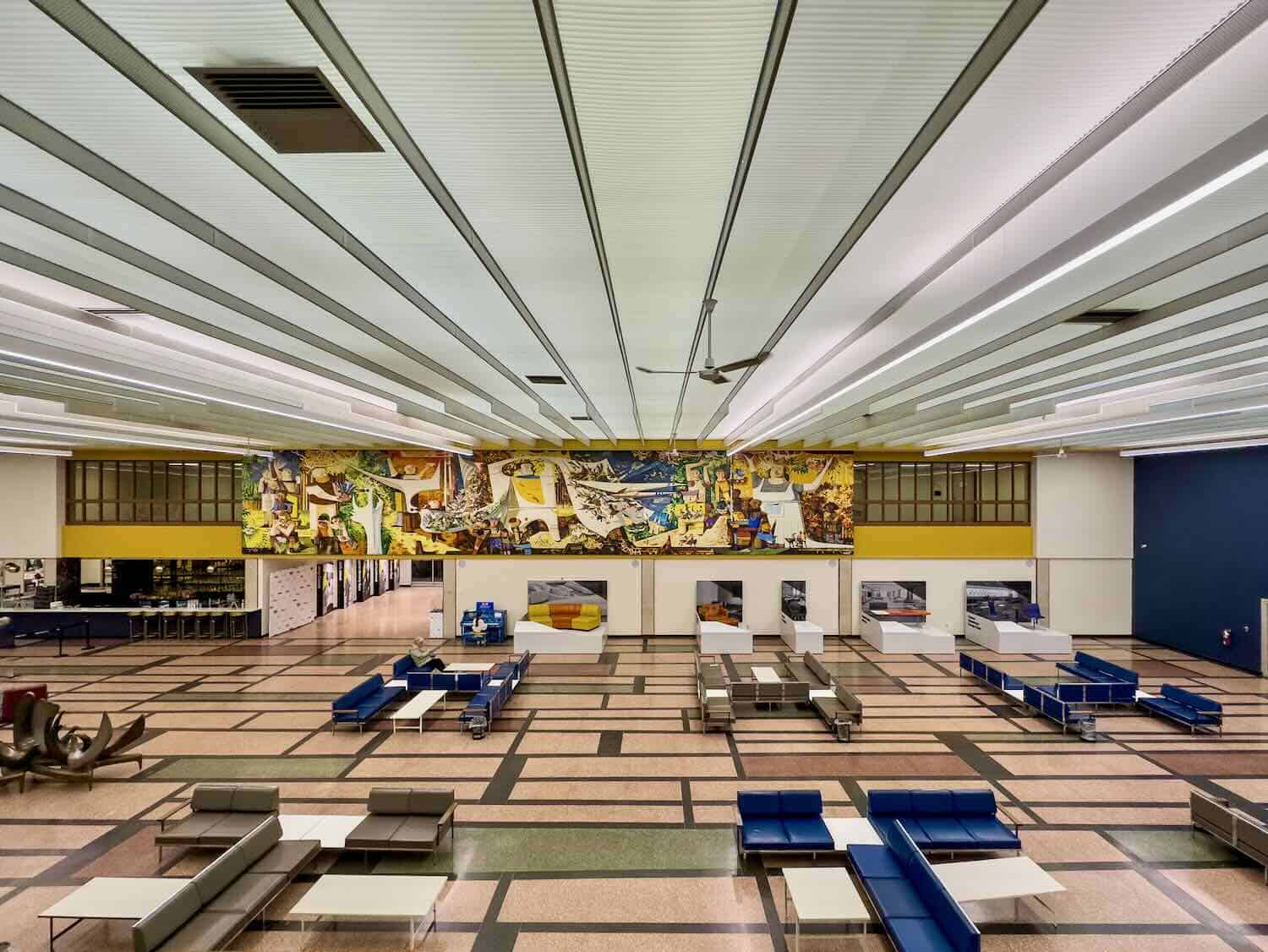
I flew into Gander, a much smaller city in Central Newfoundland but the biggest outside St. Johns. You may be surprised to learn that little Gander held the record for the largest airport in the world when it was built in the 1930s.
The airport played a massive role in WWII, ferrying 10,000 Allied aircraft to Europe. Postwar, Gander acted as a crossroads for planes needing to refuel. It was a testing site for the Concorde and housed runways big enough to land the space shuttle.
During the early days of transatlantic flights, Gander’s lounge saw stopovers from VIPs and celebrities like Elvis, Marilyn Monroe, and even Castro, whom the local kids talked into taking a sledding adventure. Queen Elizabeth II came to open the International Lounge in 1959, which was a big deal for the islanders.
On September 11th, 2001, Gander again took on an essential role as the landing location for 38 international jumbo jets forced down when air traffic was closed. The 7,000 passengers on those planes received warm welcomes from the residents who hosted them for the next four to five days.
How Gander responded, a population of approximately 9,000 at the time, and its neighbors Appleton, Gambo, Lewisporte, Glenwood, and Norris Arm is now legendary. With a mere 500 hotel rooms, the local schools turned into makeshift shelters, with Newfoundlanders donating clothing and toiletries.
The communities rallied together to ensure the well-being of their unexpected guests. Despite the cultural, linguistic, and religious differences, food, medical supplies, and telephones suddenly appeared during those tragic and hectic days.
Boomer Travel Tip
MedjetAssist Members who are hospitalized 150 miles from home receive medical transport to a home-country hospital of choice. Memberships from $99.
Come From Away, a show to memorialize Newfoundlanders’ generosity
The story of the Newfoundlanders’ response and interaction with the “plane people” became the story of a hit 2017 Broadway musical, Come From Away. The show beautifully portrays the generosity and resilience of the human spirit.
In 2023, a slightly revised adaption of the musical was first performed in Gander, providing audiences with the moving experience in the actual place where the drama occurred. I rank it as the most memorable theater production I have ever seen.
Anyone headed to Gander should not miss the International Lounge and Gander Airport Museum. The lounge, refurbished and decorated with mid-modern furniture and décor, looks like a 1960s time capsule, just as it did upon opening day.
The upstairs museum offers fascinating memorabilia spanning many years. One display plays a video of the 9/11 air controllers’ radar screen scrambled with numerous circling flights. A piece of the World Trade Center was ceremonially brought to Gander and remains a reminder of September 11th.
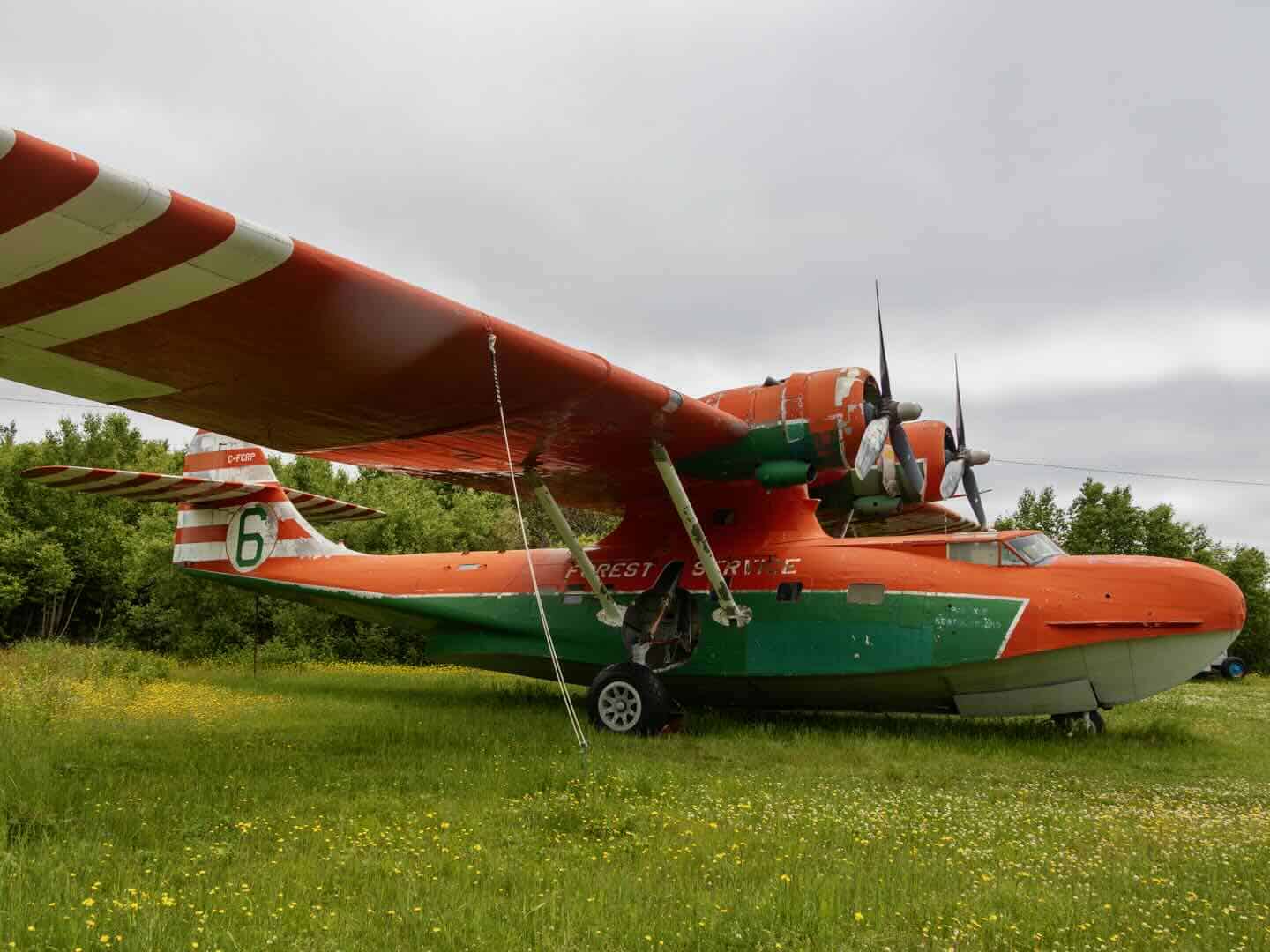
Nearby, the North Atlantic Aviation Museum (website) houses six vintage planes, including North America’s last intact Lockheed Hudson bomber. Visitors can test their piloting skills on flight simulators and view the interactive exhibits.
What to See and Do in Central Newfoundland
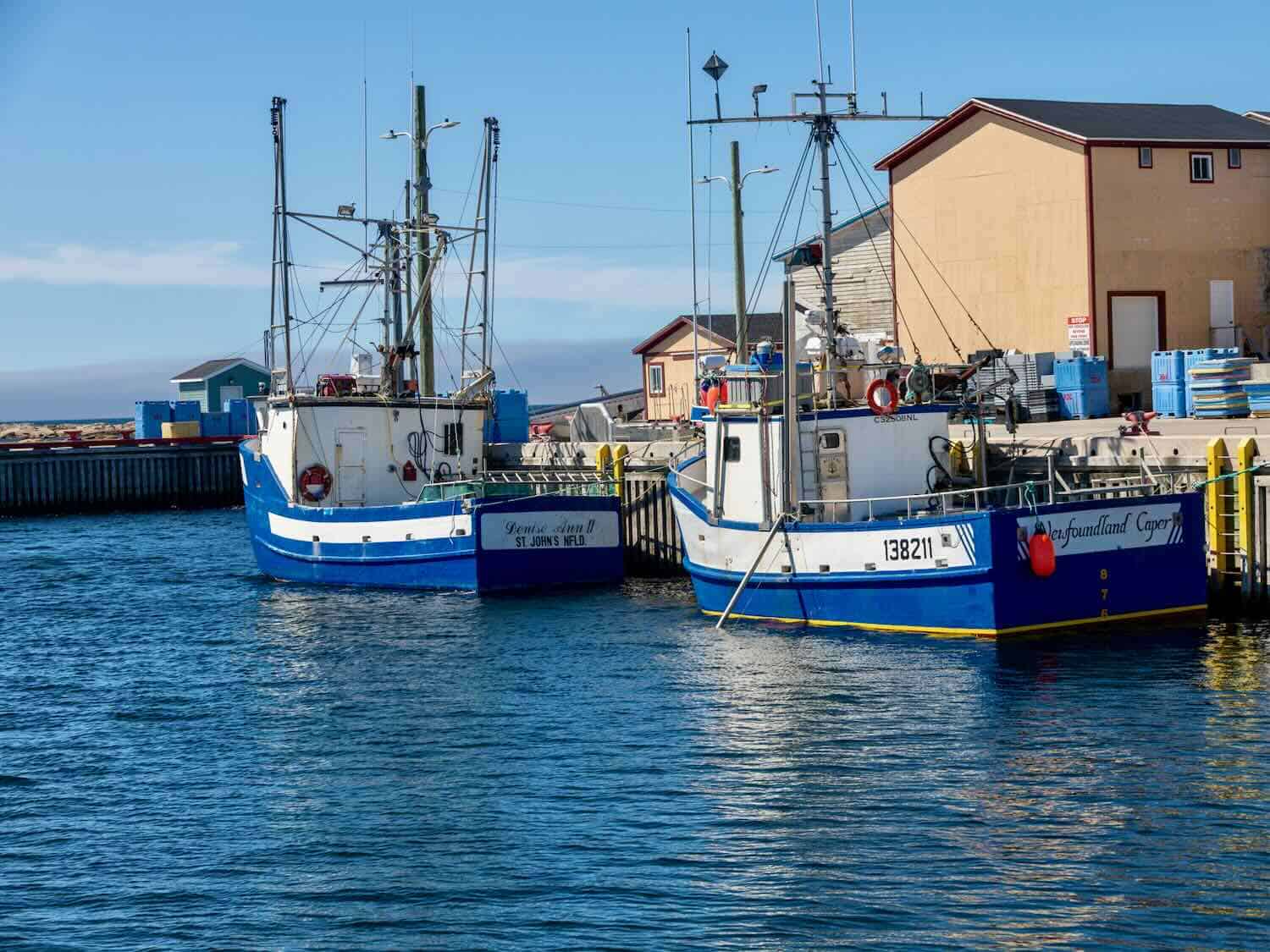
Newfoundland’s Central region has two worthwhile UNESCO World Heritage Sites: Gros Morne National Park (we have tips for visiting Gros Morne) and L’Anse aux Meadows. While Gros Morne lies slightly west of the region, it is well worth a visit for its otherworldly landscapes, including towering Scandinavian-like fjords, ancient mountains, and fascinating geological formations.
L’Anse aux Meadows archeological site on the island’s northern tip reveals the presence of Norse settlers in North America over a thousand years ago. Immerse yourself in history and marvel at the Viking ruins and reconstructed sod houses.
Take a rental car for a spin around the Kittiwake Coast, where the rocky coastline looks similar to Maine’s, but Newfoundland’s boulders appear steroid-injected. This sparsely populated region remains home to mainly fishermen and loggers. When planning, be aware that the speed limits are low, likely due to the possibility of a moose darting across the highway.

For scenic and adventure options, you’ll find kayak and boat tour outings on Hare Bay for whale watching, birdwatching of bald eagles, puffins, and ospreys, and, of course, fishing with species like trout, cod, and arctic char.
Winter brings ice fishing. In a glamping dome, you could enjoy a starry night on remote Bragg’s Island. Or, climb up the Dover Fault overlook to gaze down on a significant break in the earth’s crust.
Further along the coast, you’ll come to the Barbour Living Heritage Village in Newtown. The site shows life from the perspective of 19th-century merchant traders. Fishermen brought their catch to the merchants, who paid them not in cash but with a barter system. The workers had to buy their goods from merchant-owned stores.
Nearby, Lumsden is home to Central Newfoundland’s long sandy beach, which gets pounded by thunderous crashing waves. Why not rent an ATV and explore the coast, or rent a trailer and stay along the beach?

Twillingate, located on Newfoundland’s iceberg alley, offers the quintessential postcard picture of a town with what many consider the best iceberg viewing in Canada. Around 400-800 bergs yearly make it as far south as Saint John’s. Most come from Greenland.
See the icebergs from Twillingate’s Long Point Lighthouse and Lookout at Crow Head, a famous photography landmark built in 1876 and still operational. Campers may be interested in Terra Nova National Park (website).
Newfoundland’s food scene
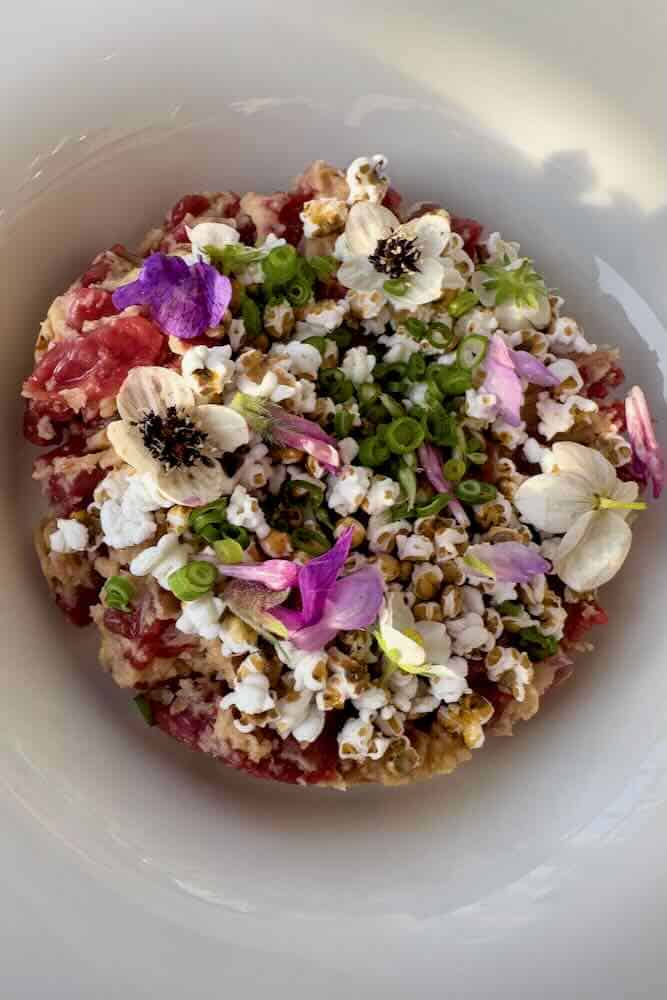
No surprise, seafood, especially cod, dominates menus. The majority of restaurants carry a down-home feel and offer home-style cooking.
Undoubtedly, you will hear of a “Jiggs dinner.” It is made by boiling salt beef and root vegetables in a big pot with a “duff,” a mixture of flour, eggs, sugar, and berries poured into a cotton bag.
Partridgeberries were new to me, but they make their way onto breakfast menus with dishes like partridgeberry muffins, bread, pancakes, and waffles. One could slather toast with partridgeberry jams and jellies.
Partridgeberries are small red berries that grow abundantly in the Canadian province of Newfoundland and Labrador. They are a not-too-sweet cross between cranberries and blueberries. My favorites were partridgeberry pies or tarts for dessert.
And suppose you wish to become an honorary Newfoundlander. In that case, you must attend a Screech-In Ceremony (offered at some restaurants). Expect to recite some words, kiss a codfish, and take a shot of Newfoundland Screech rum. The drink is pretty potent.
Newfoundlanders hold a reputation for being very hospitable, and I can attest to that. Gander is known as the Capital of Kindness. They were very helpful to me. When I asked a question, I got a narrative. Be ready for some first-rate tales. Many folks have lived in their little hamlet their entire lives.
Fogo Island: traditional life in Newfoundland

Fogo Island, a 20-mile-long island off the big island with a population hovering near 1,000, may not be the most accessible place to reach. Still, it is truly a place that will stick in your memory.
Drive an hour from Gander to the ferry dock in Farewell. Arrive early to queue up for the ferry. Then, sit back and enjoy the 45-minute crossing to Fogo.
Once ashore, you will begin to see the sleepy island’s little-changed history gradually present itself. Brightly painted houses clustered in ten tiny fishing communities stand on stilts at the water’s edge. Fishing boats bob gently in the harbor, and only a few main roads traverse the wind-swept and rocky terrain.
Start in the town of Tilting
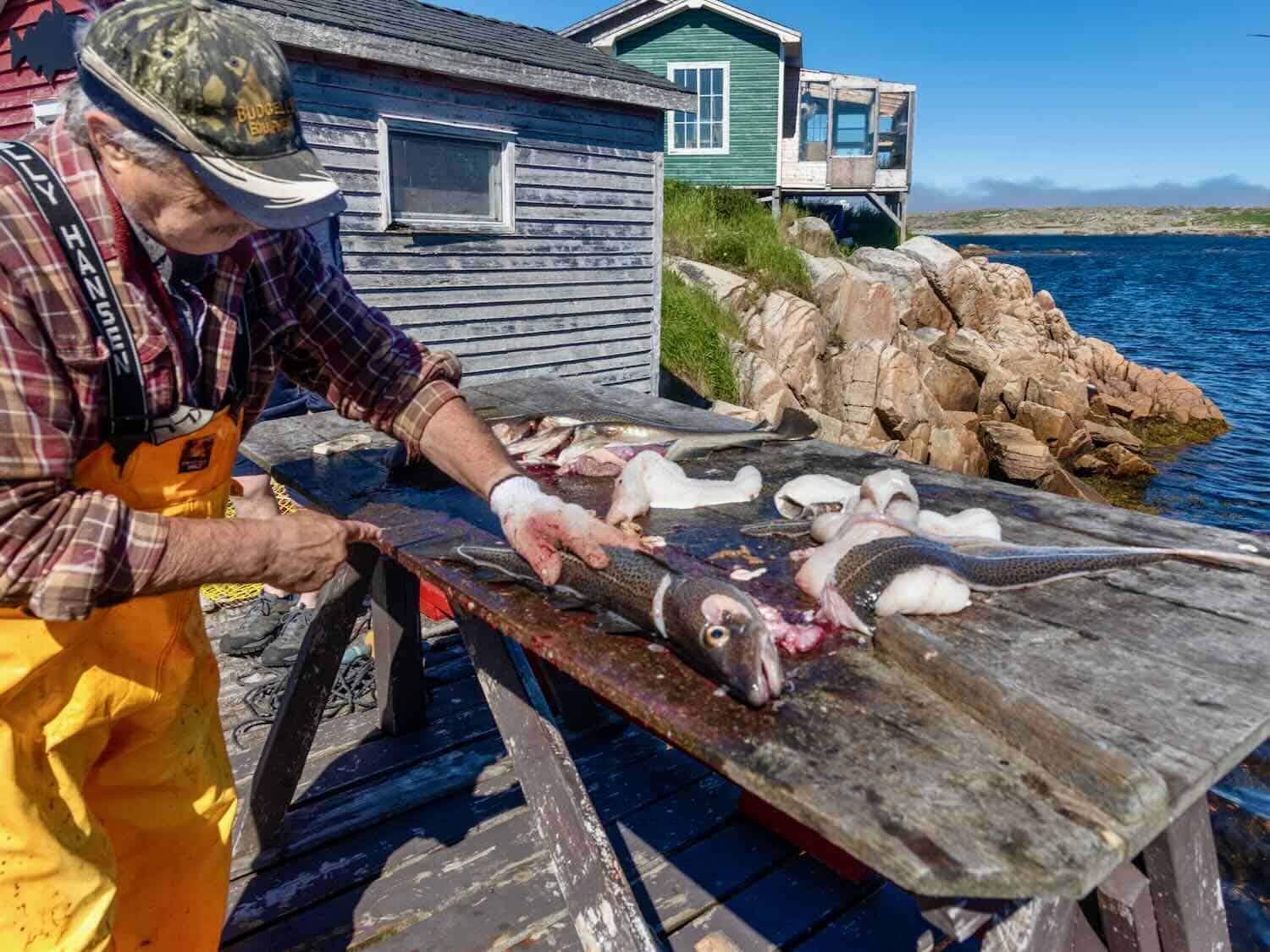
The town of Tilting, founded by the Irish, still looks much as it did 200 years ago. Many residents, now fourth and fifth-generation descendants, willingly offer captivating stories – with a strong Irish accent.
Fishing co-ops, developed in 1967, helped raise the struggling fishing trade and kept Fogo from the threat of government resettlement. Fogo Islanders quickly developed a collaboration system that had never existed on the island. They worked together to sustain their traditional employment and hold on to their homes.
Stay at Fogo Island Inn

When driving along, you will eventually come to a sign for the town called Joe Batt’s Arm. Joe was a former pirate who stayed on Fogo and gave up his life at sea. However, you’ll get no further directions to lead you to the Fogo Island Inn, but you can’t miss it.
The Inn was the brainchild of Zita Cobb, a Fogo Island native who left to work her way through the tech world and returned a self-made millionaire. She came back with the commitment to bring new life to the island without disturbing the environment.
The Fogo Island Inn is an example of sustainability to the highest degree. The structure runs energy efficiently, has solar thermal roof panels, uses no fossil fuels, avoids single-use plastic, collects rainwater, and filters it for reuse in toilets and laundry.
The stunning 29-room lodge, now ten years old and winner of numerous architectural awards, rockets the Isle into the future. The marvel, designed by Todd Saunders, showcases a harmonious blend of modern design and traditional craftsmanship.
At first, the building seems very out of place, but it takes its shape from the traditional cod fishing sheds and family saltbox houses. The interior is furnished with island-made furniture and signed hand-sewn quilts top the beds.
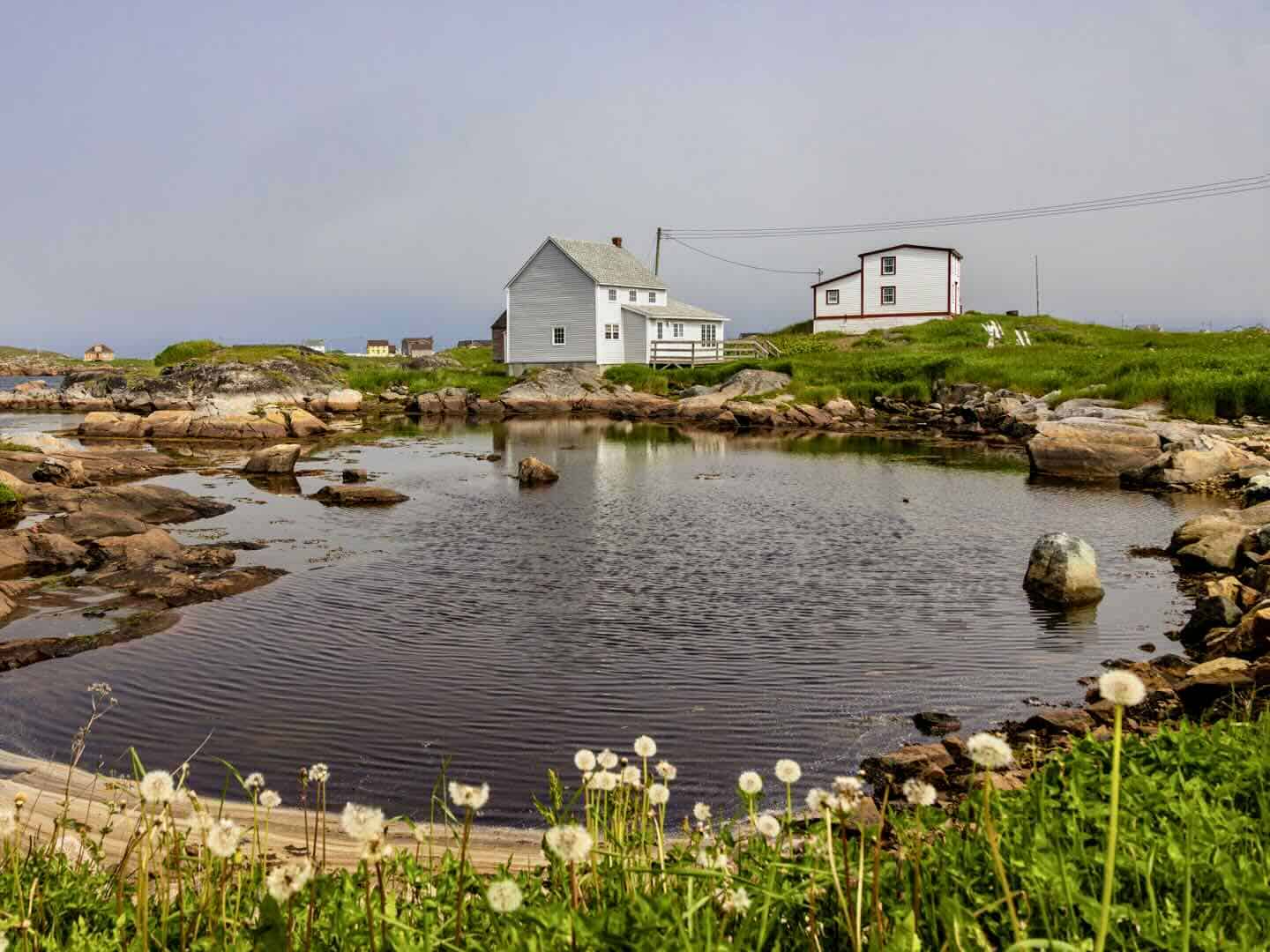
Fogo Islanders have historically hunted, farmed, scavenged, and caught their food out of necessity. At the Inn, local fresh fish dominates the menu, with the hotel hiring foragers to source the island’s herbs, seaweed, berries, and greens.
Partridgeberries, grown wild and harvested in the early fall, are one of Newfoundland’s culinary treasures. You must try something incorporating partridgeberries while visiting.
Rates are steep, but 100% of operating surpluses return to the island through a charitable foundation benefiting the residents. The service goes above and beyond the expected.
Be sure to participate in the Fogo Island Inn Community Host Program
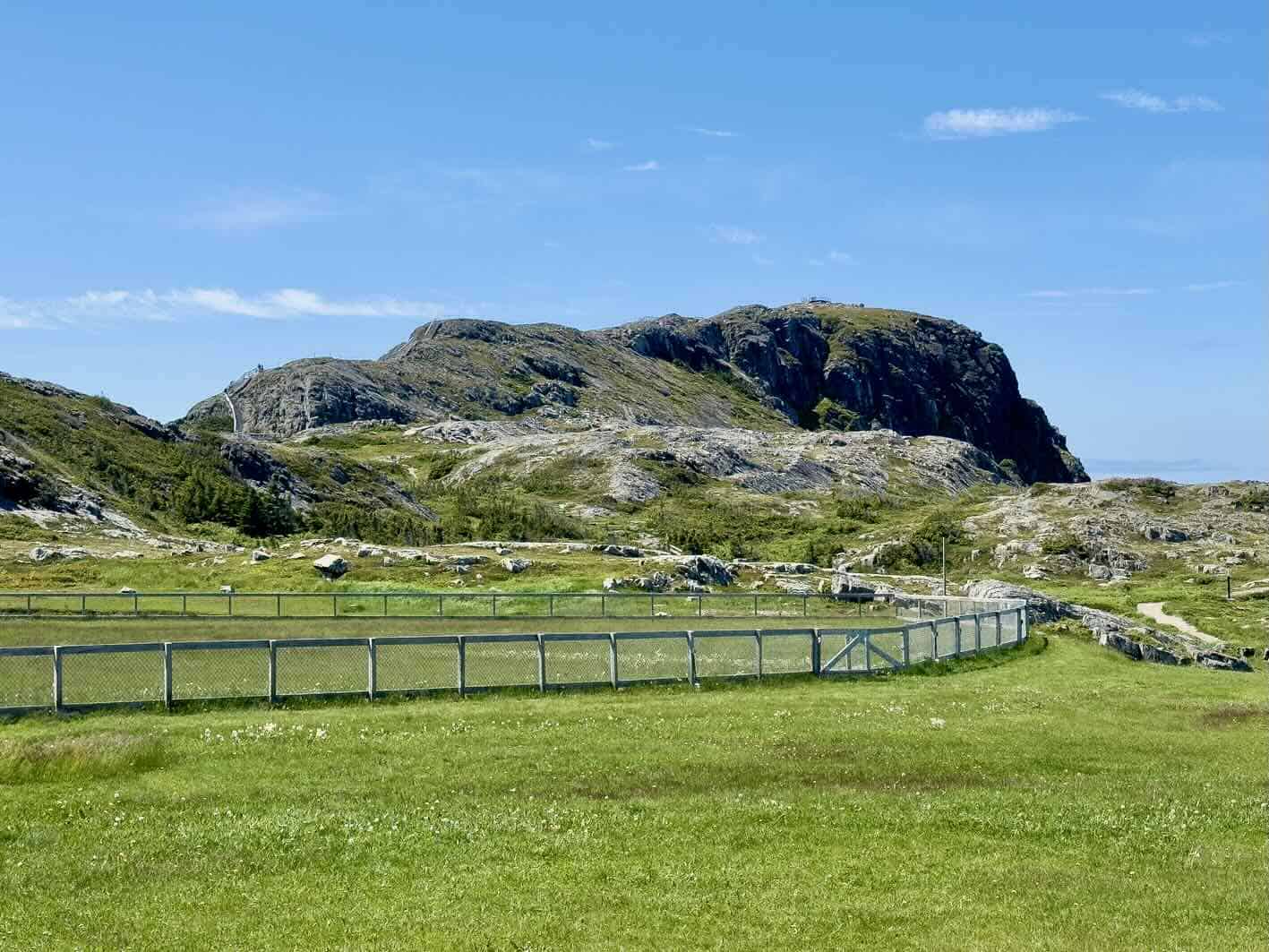
The Fogo Island Inn Community Host Program matches a resident with guests of the Inn to help orient them to the island. These individuals are passionate, lifelong Fogo Islanders who are pleased to offer their insights into the island’s heritage.
The community hosts have fished the island’s shores, picked its berries, climbed its rocks, driven its roads, and walked its trails hundreds of times. They are intimately connected to their home and eager to pass on their extensive knowledge.
I spend an entire morning with Clare, who, we discovered, is one day younger than me! I had the best time hearing about her family life on Fogo and relating it to the eras and events in my life. She drove me around the island and took a marvelous hike up Brimstone Head.
Brimstone Head, one of many trails, is a rocky outcrop with phenomenal views. It’s a perfect photo and picnic spot, a moderate hike for the whole family, and an incredible location to enjoy the sunset. I saw numerous icebergs floating by in July.
Visit the ponies at Change Islands
Before returning to Gander, I planned a brief sojourn to Change Islands, another port on the ferry route. I wanted to see ponies at the Newfoundland Pony Sanctuary.
Change Islands is a wee community of approximately 300 residents. Newfoundland ponies are a critically endangered species, and only a handful are left in the world. Where can you find most of them? On a remote little island corner of Canada, on Change Islands.
However, an ambulance needed to get to the hospital in Gander as soon as possible. So, the ferry to Change Islands was canceled, a reminder that living on a remote island comes with some disadvantages.
Gander lodging suggestions
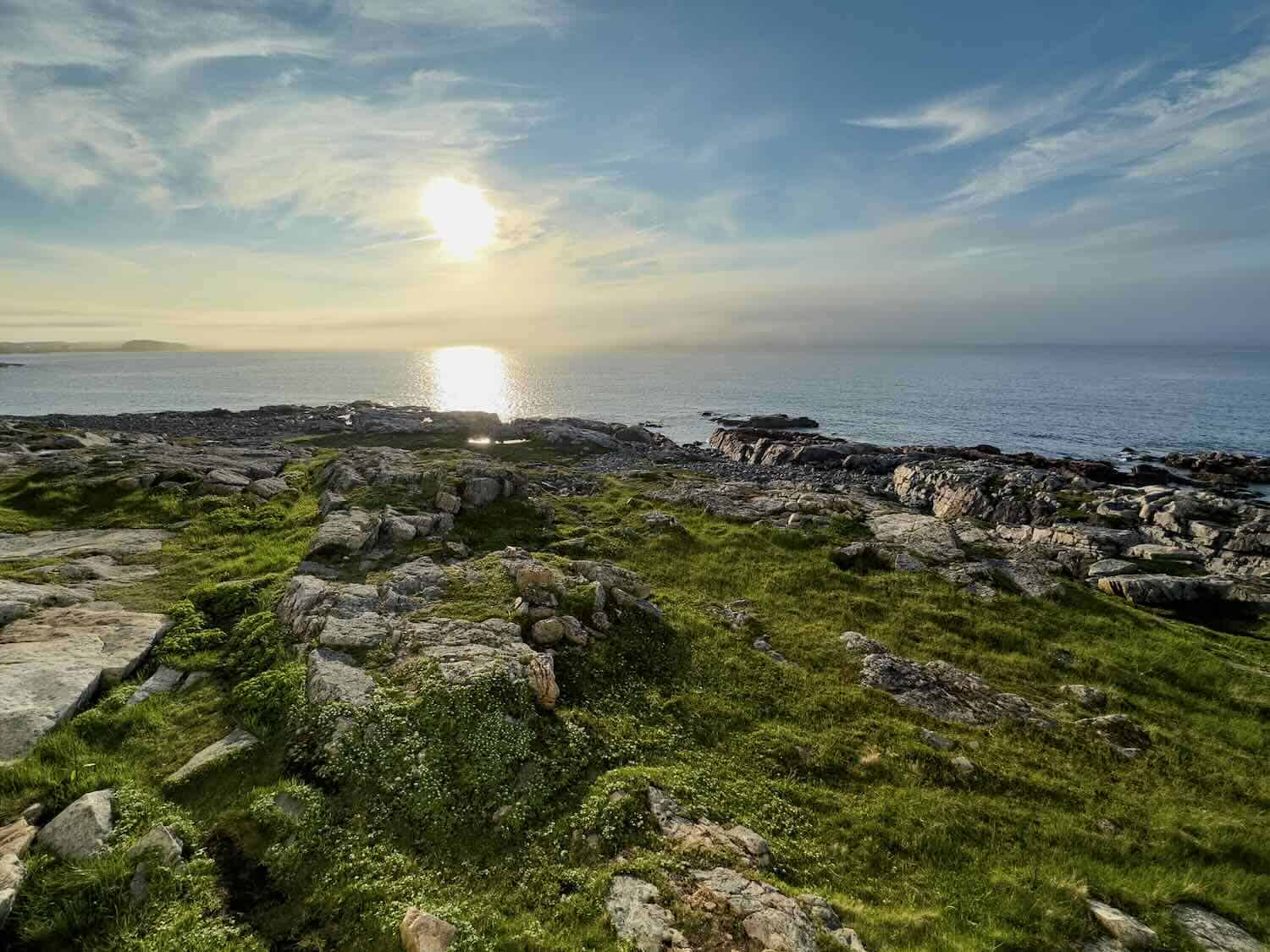
Overall, visiting Newfoundland becomes an out-of-the-ordinary scenic delight and a chance to slow down. Visitors will find hiking adventures, photography outings, and boat tours awaiting. The Rock becomes the ultimate tranquil retreat from frenzied urban life.

